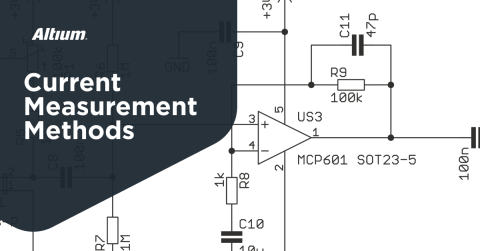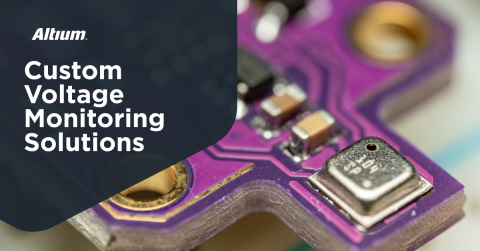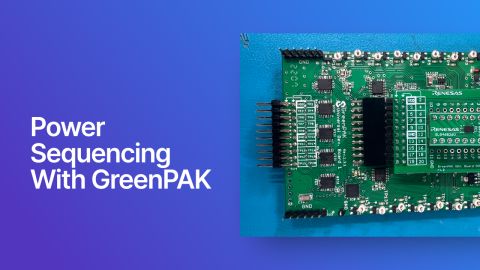Mixed-Signal Control Strategies For Power Supplies

Analog control strategies are the primary strategies used in power supplies as they offer fast control with low power. Simple analog control algorithms are well-understood and can be readily implemented in power regulator ICs, often using existing IP, and these components form most of the power regulator ICs currently available on the market.
Digital control strategies can be implemented to provide the same functions as analog control, often with smaller footprint as many analog circuit blocks are consolidated into a digital processor. By digitizing the control strategy, a systems designer can implement more sophisticated power regulator strategies which would require very complex analog circuitry. This also opens up the field of control to embedded engineers who may not be experts in analog control circuit design.
There is a middle ground where both strategies can be implemented: mixed-signal control, which requires a mixed-signal IC that can be digitally controlled with a system host. But what are these processors and how can they be used in mixed-signal control strategies? This article presents some ideas of this important topic.
How Digital Control is Used in Power Supplies
Digital control strategies in power supplies primarily use a digital approach to monitor and adjust power output from a power supply in order to achieve optimal regulation. While power is still sensed directly with an analog interface (i.e., in an ADC), this reading is monitored and processed continuously as digital data. An embedded application can use this reading to determine how to adjust the parameters in the power supply to achieve optimal control over the power output. The system architecture required to implement this involves a host processor and some analog interfaces to sense the output power.
Some advanced functions that can be more easily implemented in power supplies with digital control include:
- Zero-voltage switching, including in multi-phase power regulators
- Fault detection throughout the power supply circuit
- Conduction mode sensing
- Active nonlinear load compensation
- Dynamic voltage and frequency scaling (DVFS)
Adding Digital to Achieve Mixed-Signal Control
Mixed-signal control in power supplies essentially takes digital control and fuses it with additional analog functions beyond simple monitoring with an ADC. Normally, the analog functions would be implemented with additional circuitry in the analog front-end due to lack of analog integration into standard MCUs or FPGAs. This limitation may limit the range of control strategies which could be reliably implemented in a mixed-signal control strategy.
Note that the analog portions of the circuit may be adjustable by the system host directly or with a DAC output, depending on the components used. This approach with digital and analog control circuitry in the same strategy gives the best of both worlds: you get the speed of analog control with the processing freedom of digital control.
List of Mixed-Signal Control Strategies For Power Supplies
Many mixed-signal control strategies have been developed and published in the research literature, and many of these have been implemented in real devices. Many of these are based on assisting or adaptively configuring analog control strategies, which is a natural approach to implement digital control strategies in an existing analog strategy.
- Hybrid Analog-Digital PID - Combines analog error amplification with digital integral/derivative computation and analog PWM generation for reduced latency.
- Peak Current Mode with Digital Outer Loop - Analog inner current loop for fast response combined with digital voltage regulation for precision and programmability.
- Digital PWM with Analog Feedback - High-resolution digital pulse width modulation combined with continuous-time analog feedback.
- Sigma-Delta Control - Uses sigma-delta modulation principles for high-resolution control with simple analog filtering and digital processing.
- Digitally Assisted Analog Control - Analog control loops enhanced with digital calibration, trimming, and adaptive parameter adjustment.
- Hysteretic Control with Digital Bounds - Analog hysteretic switching with digitally programmable switching thresholds and deadband control.
- Multi-Phase Digital Control with Analog Balancing - Digital control of individual phases combined with analog current sharing and balancing circuits.
Mixed-Signal ICs For Power Supply Control
Mixed-signal ICs provide a much more highly integrated approach to power supply control with mixed-signal strategies. Rather than building the analog circuitry from discrete components, a mixed-signal IC can have these analog functions programmed using a set of macrocells, similar to an FPGA. This programmable approach consolidates most of the circuitry in the analog front-end into a single component, which greatly reduces the design effort and device footprint.
PWM control in a DC/DC converter assisted by sensing and monitoring of the output voltage using a mixed-signal IC.
Today, the only programmable mixed-signal matrix products that can implement digital and analog control strategies is the GreenPAK product line from Renesas. For example, the SLG46580V programmable mixed-signal matrix offers multiple analog functions within its digital matrix, as well as an I2C interface for digital control and a set if I/Os for interfacing with other peripherals.
GreenPAK is a set of hardware components and associated software solutions that help systems designers quickly implement mixed-signal applications like power supply control and monitoring. Renesas provides a Solution Cookbook and documented code examples for a simple power sequencing application, as well as many others.
Growth of Mixed-Signal Control
From high-compute embedded systems to power electronics with higher densities, mixed-signal control algorithms are expected to play a greater role in power supply designs. These more sophisticated control algorithms could provide lower noise, faster fault detection, early fault prediction, and better transient control in many application areas. Without the right components and development platform, designers will be left to resort to complex circuitry with large footprints and implementation of custom logic in FPGAs to accomplish mixed-signal power supply control.
Whether you need to build reliable power electronics or advanced digital systems, use the complete set of PCB design features and world-class CAD tools offered by Altium to implement your GreenPAK solutions. Altium provides the world’s premier electronic product development platform, complete with the industry’s best PCB design tools and cross-disciplinary collaboration features for advanced design teams. Contact an expert at Altium today!









